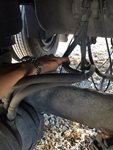 Recently I wrote about the passing of my initial California BIT inspection that I get the distinct privilege of partaking in as a registered California-based motor carrier. What I did not mention was that there was one minor thing noted for me to fix in my inspection report in regards to my trailer. Most of us have often claimed this item found is something an inspector will write up when he can’t find anything else wrong, just to be able to annotate something other than a zero-defect inspection, but in this case it was actually a valid finding. This was not a case of a brake out of adjustment, or damaged DOT conspicuity tape, but was none other than chafed air lines!
Recently I wrote about the passing of my initial California BIT inspection that I get the distinct privilege of partaking in as a registered California-based motor carrier. What I did not mention was that there was one minor thing noted for me to fix in my inspection report in regards to my trailer. Most of us have often claimed this item found is something an inspector will write up when he can’t find anything else wrong, just to be able to annotate something other than a zero-defect inspection, but in this case it was actually a valid finding. This was not a case of a brake out of adjustment, or damaged DOT conspicuity tape, but was none other than chafed air lines!
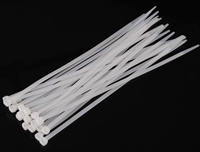 With so much rubber running around the trailer tandems, it is a fun feat to keep any of it from rubbing together. The person who owned the trailer prior to my buying it seemed to think zip ties would be a good way to keep this from happening. From what I found out from the inspector that conducted my BIT, the previous trailer owner’s assumption of zip ties being the “cure-all” for chafing was grossly false. The air lines on the trailer, as well as the ABS sensor cords were tightly secured together with your average plain white zip ties. At first glance these look clean and safe, but when the zip ties are removed, the result of extreme vibration from the road became more evident. I was fortunate that the inspector took the time to crawl under and show me what happens with zip ties when they are used as rubber hose separators.
With so much rubber running around the trailer tandems, it is a fun feat to keep any of it from rubbing together. The person who owned the trailer prior to my buying it seemed to think zip ties would be a good way to keep this from happening. From what I found out from the inspector that conducted my BIT, the previous trailer owner’s assumption of zip ties being the “cure-all” for chafing was grossly false. The air lines on the trailer, as well as the ABS sensor cords were tightly secured together with your average plain white zip ties. At first glance these look clean and safe, but when the zip ties are removed, the result of extreme vibration from the road became more evident. I was fortunate that the inspector took the time to crawl under and show me what happens with zip ties when they are used as rubber hose separators.
As zip ties pull everything tightly together, they leave just enough wiggle room for the vibration to chafe the rubber, in some cases all the way down to the metal cords. In his explanation, the best things to use are the plastic hose separators available at most truck stops and parts supply stores (pictured below left), which firmly grip each hose and create the separation that prevents them from rubbing together. If someone is to use zip ties, he suggests using two for each point of separation. The combo he suggests is using one to create a separation between the lines in a figure-8 loop, then another at the same spot to pull them together loosely (pictured below right).
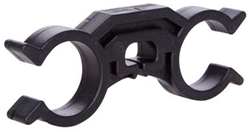
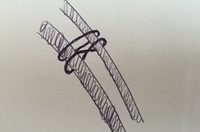
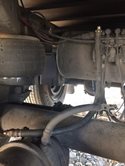 Even though he only wrote up one air line for chaffing, I decided to take it upon myself and undo all of the former owner’s doing and discovered a couple more slightly chafed hoses. After spending a Saturday under the trailer, replacing three air lines, and putting on about a dozen new hose separators, my trailer is back up to my standards of operating! BE sure to take the time to inspect these frequently worn items under the trailer, since you don’t want to have a clean inspection be ruined by overlooking something so simple. Not to mention that a ten dollar bag of line separators versus a five dollar bag of zip ties could mean the difference between a worn hose that leaves you stranded on the side of the road or continuing to run in a safe and profitable manner!
Even though he only wrote up one air line for chaffing, I decided to take it upon myself and undo all of the former owner’s doing and discovered a couple more slightly chafed hoses. After spending a Saturday under the trailer, replacing three air lines, and putting on about a dozen new hose separators, my trailer is back up to my standards of operating! BE sure to take the time to inspect these frequently worn items under the trailer, since you don’t want to have a clean inspection be ruined by overlooking something so simple. Not to mention that a ten dollar bag of line separators versus a five dollar bag of zip ties could mean the difference between a worn hose that leaves you stranded on the side of the road or continuing to run in a safe and profitable manner!